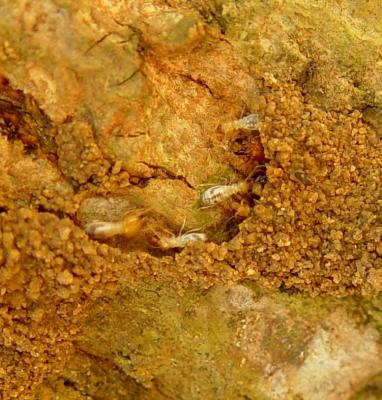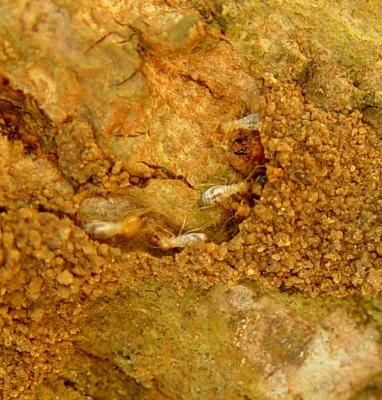Featured Photo

Other Photos

feaured_photo_co
A. M. Varela, icipe
Is this a Minor Pest?
Yes
Minor Pest Title
Termites (Amitermes spp., Pseudacanthotermes spp., Macrotermesspp., Odontotermes spp., Microtermes spp. and Ancistrotermes spp.)
Minor Pest Description
Occasionally termites can be a problem by attacking the seed pieces or the roots and stems of established plants. Yield losses can be very high. In Sudan losses of 18 % have been recorded and in Central Africa losses of 5-10% are common. In Nigeria plant germination failure of up to 28 % has been reported. The most common damage to sugar cane is the destruction of the planting material (setts).
Minor Pest What to do.
- Deep plough or tillage to expose termites to desiccation and to predators, thus reducing their number in the crops. Pre-planting tillage also destroys the tunnels built by termites and restricts their foraging activities.
- Dig mounds and destroy the queen.
- Destroy mounds. Mounds may also be flooded or burnt with straw to suffocate and kill the colony.
- Spray plant extracts, such as those of neem, wild tobacco and dried chilli.
- Conserve natural enemies. Ants are important termite predators. Attract ants to the field by placing protein-based baits in the field near the plants.
- Remove residues of previous cereal crops (sorghum, millet and maize). Plant residues left in the field serve as food for termites, which may infest the new crop.
Minor Pest Position
4
Minor Pest Firstcontent
134
Pest Type
insect
Custom1
Local names; white ants, mchwa (Swahili); Harvester termite ([i]Hodotermes mossambicus[/i]); Bark-eating termites ([i]Macrotermes[/i] spp., [i]Odontotermes[/i] spp.).
Host Plants
Sugarcane
Featured Image
PH Pests Media Gallery
